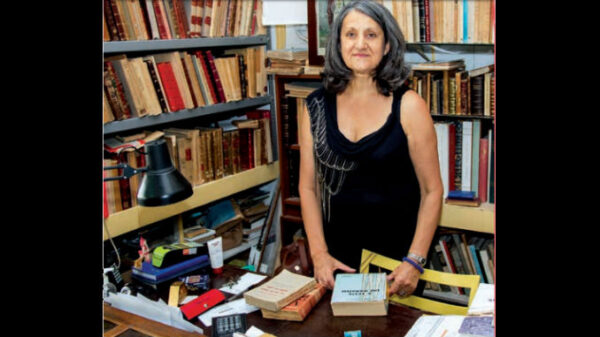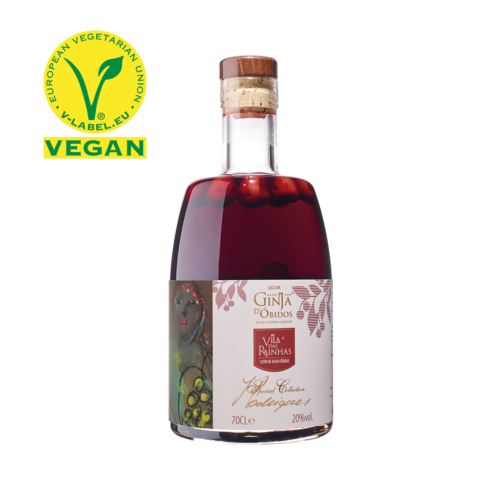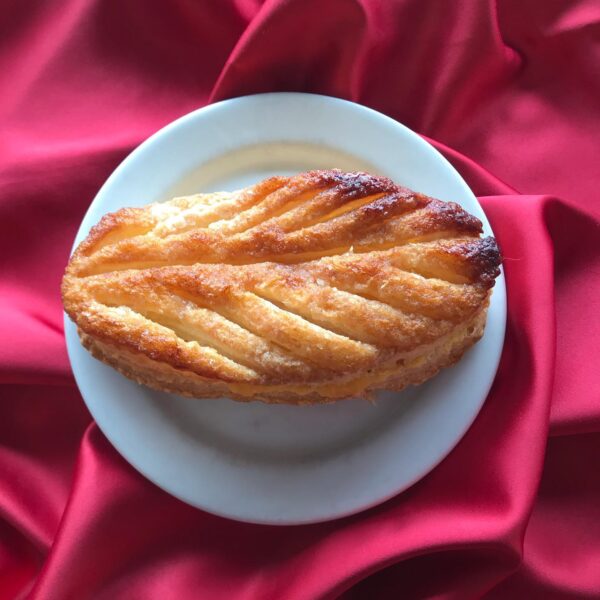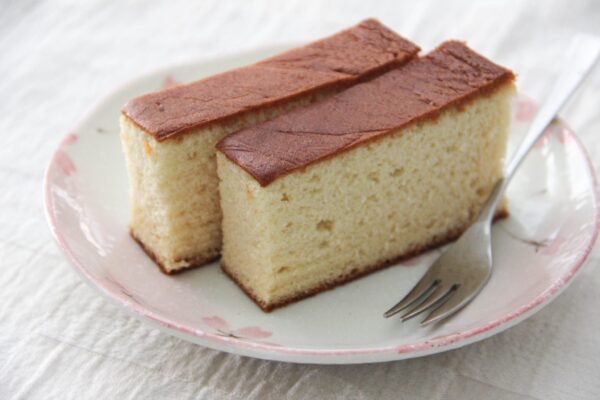We finished our snack and history lesson in the Jardim da Estrela, took a stroll around the park to admire some of its trees, crossed the street, and made a brief stop in the Basilica

built by Queen Maria the Pious (Maria the Mad if you’re Brazilian) after the birth of her son in 1761. From there we set off up the hill toward Campo de Ourique – the neighborhood where we’d spend the remainder of our tour.
We made a brief stop before we reached our next food destination and none of us thought to ask our guide Ines whether this was a standard part of her tour because, although it was on our way, it certainly had nothing to do with food. We stopped at the Livraria Alfarrabista Campo de Orique where Ines took us into this rather ordinary looking shop

and introduced us to the owner, Crisálida Filipe.

(From welovecampodeourique.com)
What makes Crisálida and her shop unique is that when she opened it in 1990 hers was one of 33 in Lisboa that sold used, rare, and antique books but the only one that was owned by a woman. Despite the intense skepticism of her male colleagues and competitors – some of whom were certain she’d fail within six months, 34 years later, she’s still running the shop. I don’t recall seeing that her shop had received the Loja com História designation as did another shop we’d encounter later in the tour but her presence certainly provided an interesting historical sidebar.
From hors d’oeuvres to dessert
We continued up the street and around the corner to Pastelaria Chikapa. If you enter the word pastelaria into a program that will translate it to English, the answer you’ll receive will almost certainly be “pastry shop”. And that’s a correct answer as far as it goes. However, most pastelarias serve much more than pastries alone.
(Here’s another brief Portuguese lesson. The suffix ‘aria’ indicates a shop that sells the noun to which it is attached and often products related to that noun. Thus, the pastelaria sells pasteis or pastries, the padaria sells baked goods, the papelaria is a stationery shop, the joalharia a jeweler, the lavandaria a place to clean your clothes, and so on. One of the main rules of stress in Portuguese is that the penultimate syllable is usually stressed so “luh-vahn-duh-REE-yuh”.)
Most pastelarias will serve some form of pequeno almoço (breakfast) and often almoço (lunch) as their main meal. They will usually offer soup, sandwiches, and sometime a prato do dia (daily special) along with their pastries and beverages that can range from café and chá to beer (cerveja) or wine (vinho) and even other sprits. And in our case, the first offering we had when we arrived at Pastelaria Chikapa was ginjinha Portugal’s famous liqueur made from sour cherries. Our pour might have come from a bottle like this

(From Viladasrainhas.pt)
since it was a ginjinha in the style of Óbidos. Other areas and towns such as Alcobaça, Marvão, and Covilhã have their own variations. The latter, from the Serra da Estrela region (an area also famous for its cheese), has a protected designation of origin designation. In addition to the Vila das Rainhas, other noteworthy brands are Espinhera (served in Lisboa at A Ginjinha), Ginjinha Sem Rival (served at its namesake bar where you can also try the spicier Eduardino), and Ginjinha de Óbidos Mariquinhas. (Remember, although it’s served in a shot sized glass, ginjinha should be sipped and not imbibed as a shot. If it will help you remember, always order your ginja com rather than sem. A ginjinha served com will have one or more cherries in the cup. This makes it harder to swig and provides a little post drink treat The cherry trick doesn’t apply to ginjinha when served in a chocolate cup. Still sip it, though)
After our drinks, we had a chance to try the pastry for which Chikapa may be most famous – its parra. In Portuguese, parra can be used to refer to a grape leaf but in this instance we were looking at a puff-pastry with a bit of caramelization filled (perhaps slightly overfilled for me given what I dripped on my travel vest) with a cream made from egg yolks and simple syrup called doce de ovos.

(From ingamba.pro)
Chikapa has four different types of laminated dough one of which is reserved exclusively for use in its parras. The result is a thin, crispy crust with a sweet, creamy, and runny filling.
Add the sugar, spread the plaster
Food tangent number two – more egg yolks
Kasutera. How did it come to pass that this sponge cake like dessert became popular in Japan when the Portuguese arrived in the 16th century with a dessert that in Portugal they called pāo-de-ló and that remains popular to this day? We’ll start with the fact that because of its simple ingredients, the cake stored well during the long durations of those sea voyages.
Next, we need to know that in most Portuguese regions in Asia this cake was called pāo-de-Castella – perhaps because it originated in the Kingdom of Castille before that region became part of Spain. Both the Portuguese and the Japanese shortened the cake’s name to castella. As the Portuguese were trading with the Japanese mainly in Nagasaki, they often used the cake in their bartering. For the Japanese, castella became Kasutera. (Think of this as similar to the way that American words such as ice cream {Aisukirīmu} and beer {bīru} have been adapted to fit more comfortably with Japanese phonetics.)
In 1634, about 30 years after the Tokugawa shogunate came to power, the Portuguese were banned from the city of Nagasaki although they continued to trade from the man-made island of Dijema. Still, the cake remained popular with the shogunate throughout its longer than two centuries of rule. Its basic ingredients are simply flour, sugar, and egg yolks. (The Chinese had introduced sugar to Japan in the eighth century but it was a costly luxury and typically limited to use in medicine and religious offerings. When the Portuguese arrived, trade in the sweet became much livelier.)

(From Japanesecooking101.com)
The brown wrinkle-free crust results from traditionally baking the cake in a topless and bottomless wooden frame. There are many variations of the cake available in Japan but the bottom of a traditional Nagasaki Castella has a slightly crispy texture from finely-ground brown sugar crystals that sink to the bottom of the batter.
Other Asian examples of the Portuguese egg yolk influence include the multi-layer Goan Bebinca, Foi Thong which is Thailand’s version of fios de ovos, and the Indonesian bolu. (Bolu is one of more than 70 words Indonesian has borrowed from Portuguese. It stems from the Portuguese ‘bolo’ meaning cake or muffin and, if you visit Portugal, I highly recommend trying the bolo de arroz as another alternative to satisfy your sweet tooth.) If you’re traveling in Asia and enjoying a dessert that’s yellow because of its egg yolk content, the odds are you have the Portuguese to thank.
Next stop, the Mercado de Campo de Ourique.